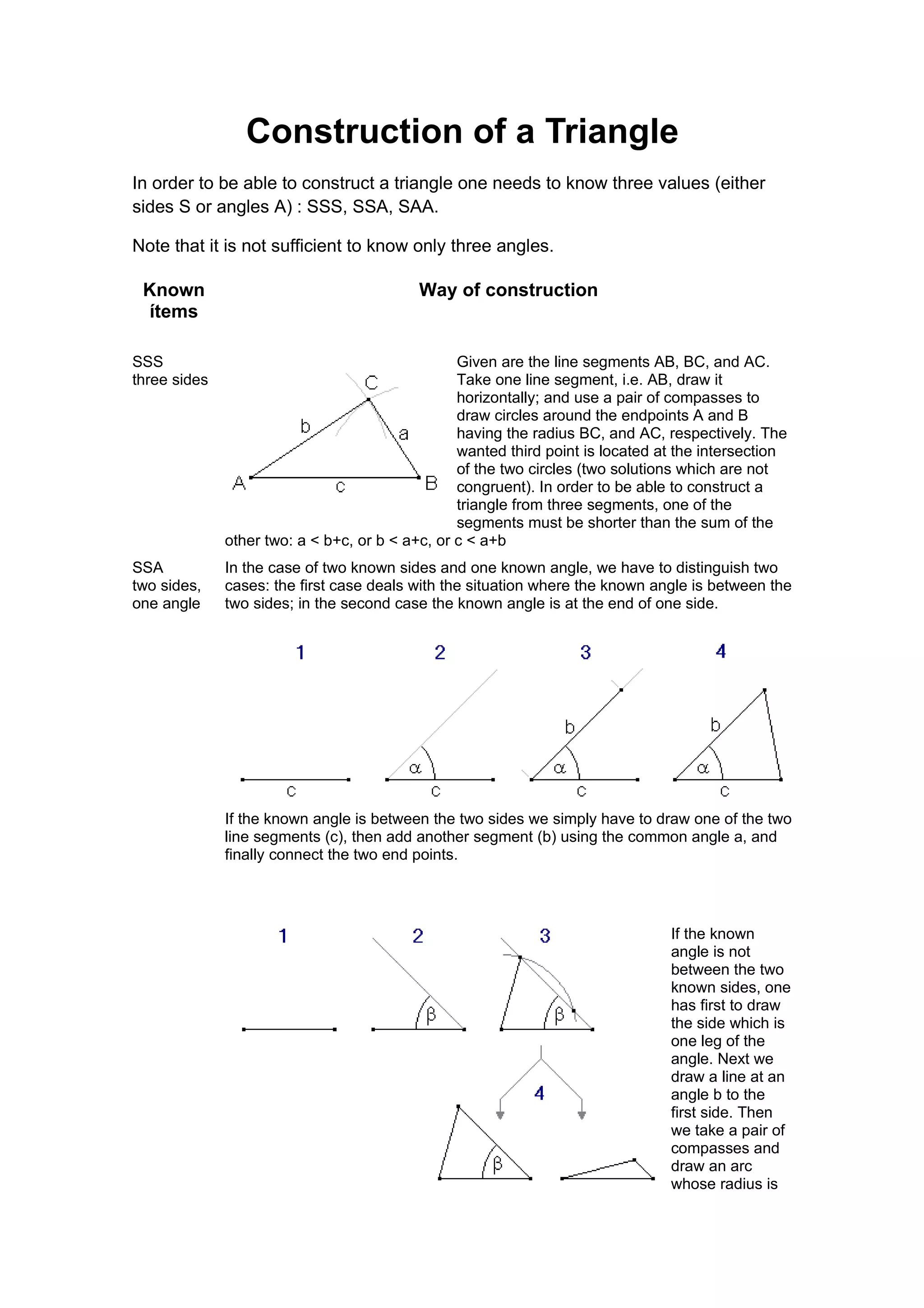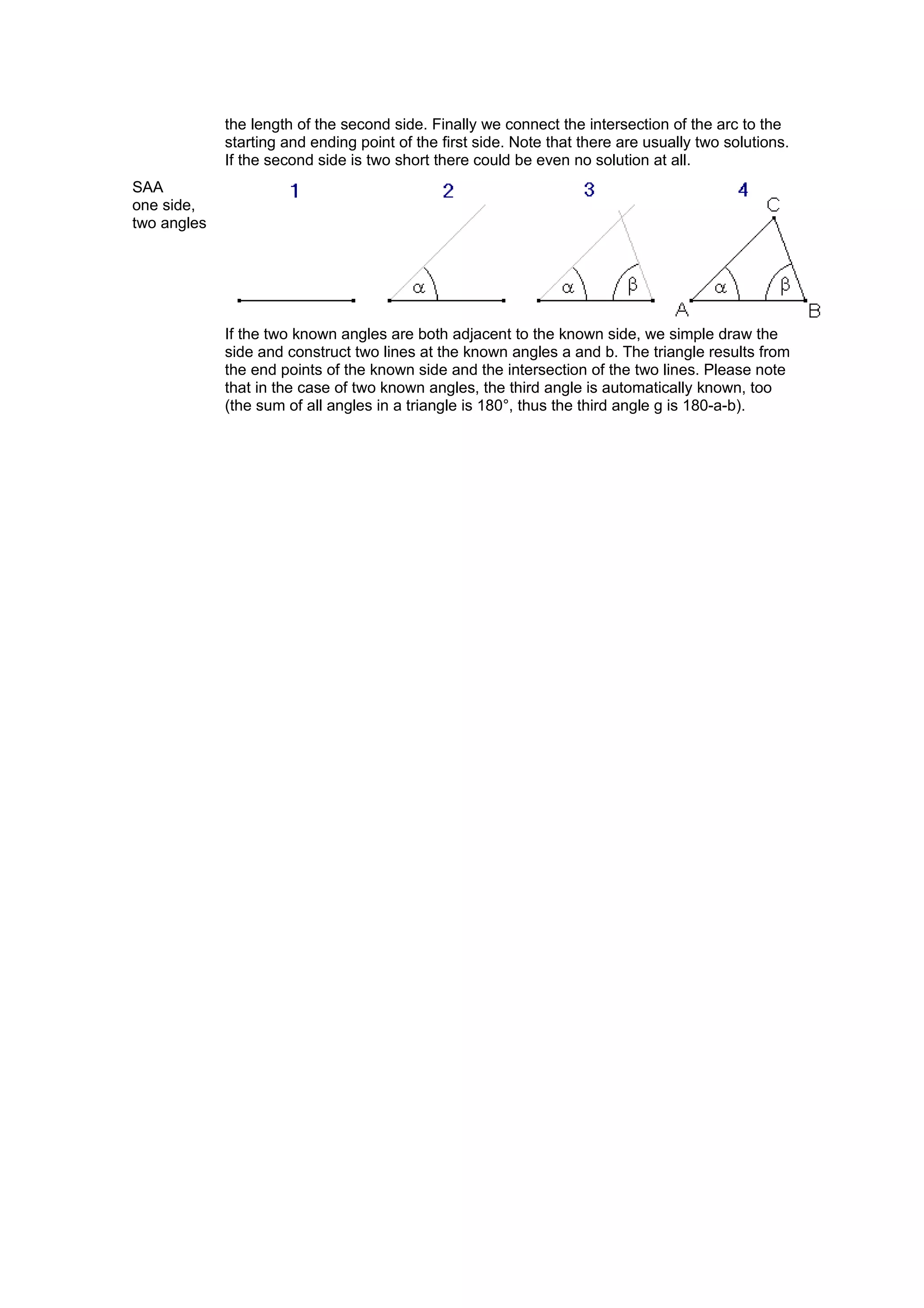To construct a triangle, you need to know three pieces of information: three side lengths (SSS), two side lengths and the angle between them (SSA), or one side length and the two angles adjacent to it (SAA). For each case, there is a defined construction process using a compass and straightedge that allows locating the third point to complete the triangle.

